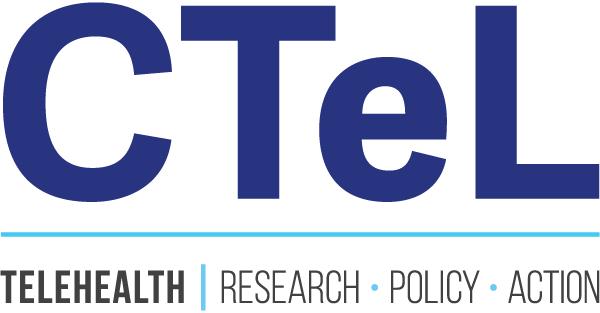Local AI Evaluation: How Hospitals Are Ensuring Technology Serves Patient Care
How AI Monitoring Systems Like IMPACC and VAMOS Are Revolutionizing Healthcare
In the rapidly evolving world of healthcare technology, artificial intelligence (AI) has transcended buzzword status to become a transformative force in clinical settings. Yet, as AI tools become more sophisticated, questions arise: Are these technologies truly benefiting patients? How can we ensure AI systems are safe, effective, and equitable?
At the Assistant Secretary for Technology Policy's (ASTP) 2024 Annual Meeting, experts presented groundbreaking approaches to AI validation and monitoring, with UCSF's IMPACC and Vanderbilt's VAMOS platforms taking center stage. These initiatives signal a critical shift toward responsible AI governance in healthcare.
Why AI Validation Matters
Unlike consumer technologies, healthcare solutions can't be treated as one-size-fits-all tools. What succeeds in an urban hospital may falter in a rural clinic due to differences in patient demographics, infrastructure, and care delivery. This makes AI validation an intricate process that must go beyond technical performance to evaluate real-world impact.
"Think of it like medical research," says Dr. Michael Chen, a healthcare technology policy expert. "You wouldn’t test a new drug solely in a laboratory. You need real-world, localized testing to understand its true impact."
This emphasis on local evaluation underscores the need for platforms like UCSF's IMPACC and Vanderbilt's VAMOS, which combine advanced technology with rigorous, real-world testing protocols.
UCSF's IMPACC: A "Digital Immune System" for AI
The Impact Monitoring Platform for AI in Clinical Care (IMPACC) at UCSF Health represents a bold innovation in AI oversight. Described by Dr. Michael Blum, Vice Chief of Informatics, as a "digital immune system," IMPACC ensures that AI tools integrate seamlessly into healthcare settings without compromising patient outcomes.
How IMPACC Works
1. Contextual Integration Assessment:
Evaluates AI tools against clinical workflow needs.
Maps potential disruptions to care delivery.
Identifies friction points in adoption.
2. Algorithmic Vigilance:
Tracks real-time performance.
Detects bias and algorithmic drift.
Employs recalibration protocols for consistent, equitable performance.
3. Multidimensional KPIs:
IMPACC redefines how we measure AI's impact by using dynamic, patient-centered metrics:
Clinical Outcomes: Tracks long-term health improvements across diverse populations.
Physician Efficiency: Measures reductions in administrative tasks and diagnostic time.
Patient Satisfaction: Examines perceptions of AI-assisted care and overall trust.
Resource Utilization: Analyzes cost savings and operational efficiency.
Equity Indicators: Ensures fair performance across demographics.
"These aren't just metrics," Dr. Blum emphasizes. "They’re living narratives of how AI transforms healthcare."
Vanderbilt's VAMOS: AI Safety Through Algorithmic Vigilance
Drawing inspiration from pharmacovigilance, Vanderbilt's Algorithmovigilance Monitoring and Operations System (VAMOS) applies pharmaceutical-level rigor to AI oversight. This proactive approach ensures that algorithms remain safe, effective, and adaptable.
The Four Pillars of VAMOS
1. Preventative Approach:
Predictive modeling simulates thousands of potential scenarios to identify vulnerabilities before deployment.
2. Preemptive Monitoring:
Continuous surveillance detects performance anomalies in real time, ensuring early intervention.
3. Responsive Mechanisms:
Automated alerts and tailored mitigation strategies address issues with precision.
4. Reactive Adaptation:
Post-incident analysis fosters continuous improvement, enabling AI to self-correct and evolve.
"We’re creating an ecosystem where technology learns like a seasoned clinician," explains Dr. Jennifer Wager, VAMOS's lead architect.
The Broader Implications
Both IMPACC and VAMOS go beyond traditional monitoring to establish a new paradigm in AI governance. By combining cutting-edge technology with localized, patient-centered evaluation, these platforms ensure that AI serves healthcare’s ultimate mission: improving lives.
As the federal government considers its role in supporting these initiatives, experts emphasize the need for collaborative governance. National assurance labs can provide oversight, but real validation happens where AI tools are used—locally, in diverse healthcare settings.
The Future of AI in Healthcare
The message from the ASTP meeting is clear: AI innovation must be balanced with unwavering commitment to patient safety, equity, and ethical development. As healthcare technology evolves, platforms like IMPACC and VAMOS remind us that true success isn’t measured in technical achievements but in healthier, happier patients.
"Technology must always serve human health," Dr. Wager reflects. "That’s how we ensure AI becomes a force for good in healthcare."

